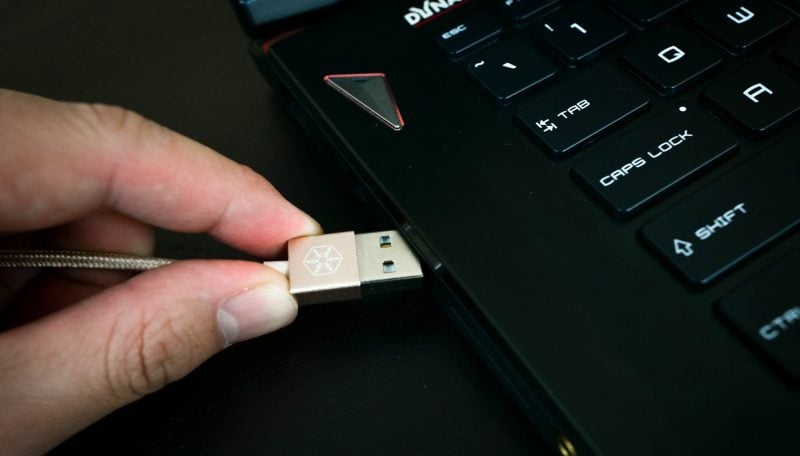
These days, USB is pretty much everywhere. From your laptop to your smartphone to your tablet to much, much more, USB has become the dominant standard for communications between PCs and other electronic devices.
Originally started in the 1990’s to establish a standardized connector for PC peripherals, today USB it’s used for everything from computer mice to even laptop charging. In order to accommodate for such a wide range of devices and applications, USB introduced numerous versions and revisions within each version over its lifetime, which has unfortunately led to a bit of confusion. As such, this article aims to provide a handy reference guide to highlight the key features of each version and some of the commonly used USB connector types.
USB Versions
Despite how long the USB standard has been around, the USB standard hasn’t really gone through a whole lot of major versions although there have been quite a few smaller revisions within each version. Either way, the most important information you’ll probably want to know about a USB version is its maximum theoretical bandwidth.
| Interface | USB 1.0 | USB 2.0 | USB 3.0/USB 3.1 Gen 1 | USB 3.1 Gen 2 |
|---|---|---|---|---|
| Max Bandwidth | 1.5 Mb/s | 480 Mb/s | 5 Gb/s | 10 Gb/s |
| Released | 1995 | 2000 | 2008 | 2013 |
USB Connector Types
There are a few dominant USB connector types out there. Let’s take a look at these connectors. It’s important to note that the USB connector type does not determine the version of USB that’s supported. For example, the USB Type-A connector can be wired for USB 2.0 and USB 3.0 however, the version will determine the maximum available bandwidth for data transfer. This is why older devices USB 2.0 or even USB 1.1 devices will work with devices that feature USB 3.0 ports.
| Port | Type-A | Type-B | Type-C | Mini USB | Micro USB |
|---|---|---|---|---|---|
| Number of Pins | 4 to 9 pins | 4 to 9 pins | 24 pins | 4 to 9 pins | 4 to 9 pins |
| Durability (minimum number of insertion/removal Cycles) | 1,000 | 1,000 | 10,000 | 5,000 | 10,000 |
USB Type-A
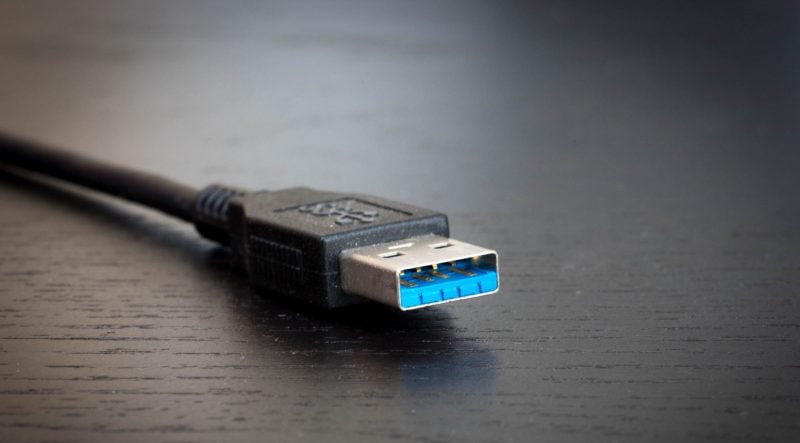
USB Type-A is the most common USB connector. It’s slowly being phased out by USB Type-C, but complete adoption won’t happen for another few years.
Typically, USB Type-A connectors wired for USB 3.0 feature a blue insert, but this is not required. Similarly, USB Type-A ports on your PC does not have to feature a blue insert to be wired for USB 3.0.
USB Type-B
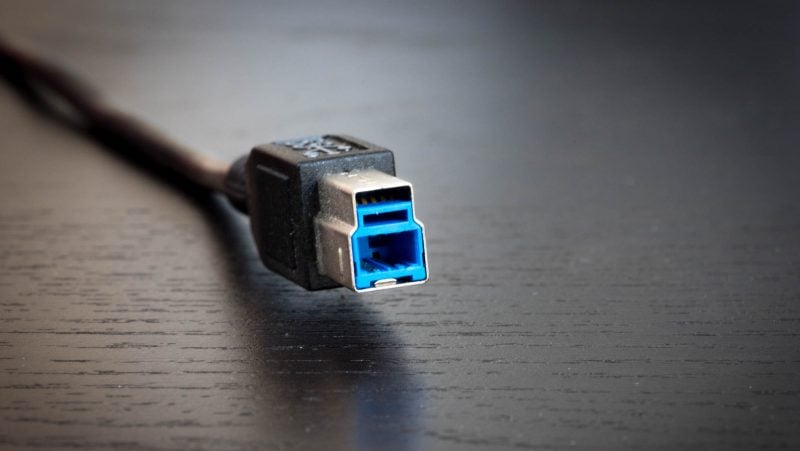
USB Type-B connectors are used for larger devices, the most common one being printers. As these are relatively large connectors, they’re rarely seen in portable consumer devices.
There are two major versions of USB Type-B. The first is the USB Type-B connector that’s square shaped which was typically used in USB 2.0 or below. The second is the USB Type-B connector pictured above, which is typically used in USB 3.0 or above.
Compatibility with the different USB Type-B connectors are tricky. The USB Type-B connector for USB 2.0 is backward compatible with USB 1.x, but may not be forward compatible with some USB Type-B ports for USB 3.0. The USB Type-B port for USB 3.0 was later revised to be backward compatible with USB Type-B connectors for USB 2.o.
Aside from the different form factor, USB Type-B connectors wired for USB 3.0 typically feature a blue insert. However, USB Type-B do not not have to feature a blue insert to be wired for USB 3.0.
USB Type-C
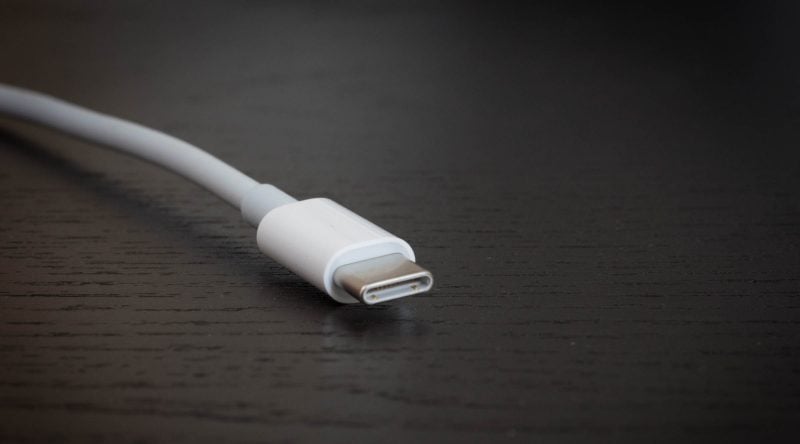
As the latest and greatest USB connector type, USB Type-C is superior to all other USB connector types in every way. It has more pins for data transfer, higher-power delivery capacity, and is far more durable. Its 24 pins can be re-purposed for non-USB data transfer protocols such as the DisplayPort, reducing the number of ports needed on mobile devices. It’s also much smaller than the USB Type A connector, meaning more ports can fit into the same surface area.
USB Type-C enabled several features that weren’t possible with other USB connector types. Smartphones can now enjoy faster transfer speeds, laptops can be powered over USB, and my favorite of all, it’s reversible so you’re able to plug it in without having to check which side is up.
USB Mini-B
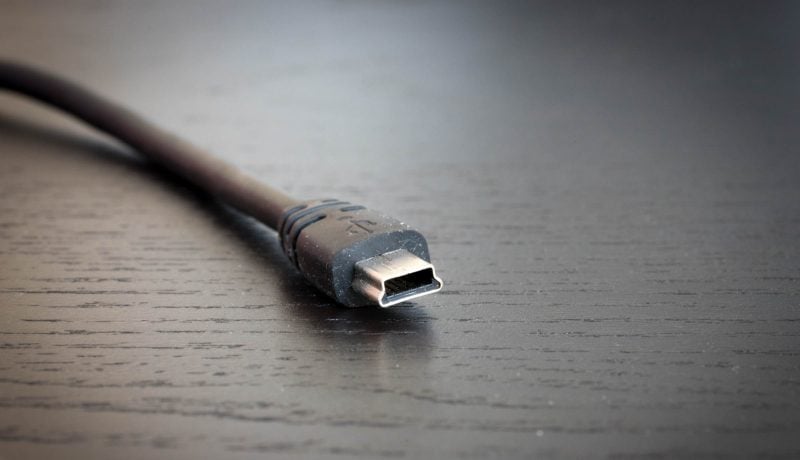
Also referred to as Mini USB, you’ll typically find USB Mini-B connectors on smaller devices such as cameras and older smartphones, but this connector type has mostly been replaced by USB Micro-B or USB Type-C.
USB Micro-B
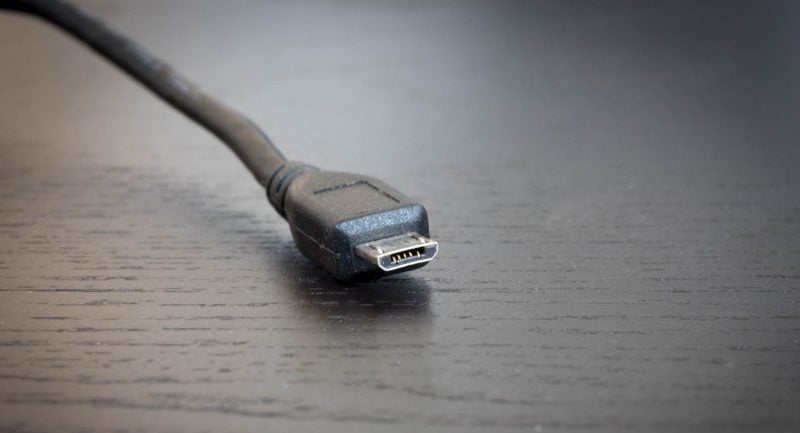
Also referred to as Micro USB, USB Micro-B is even thinner than USB Mini-B and is the most prevalent standard used on many of today’s smartphones, IoT and other mobile devices. That said, it’s on the path to becoming phased out by USB Type-C in the future.
One of the main features with Micro USB is its durability. By placing the lock latches onto the plug, stress can be alleviated from the port. Whether this actually allows it to reach its incredible durability rating is debatable, but many still believe that it’s equally durable to USB Micro-B.
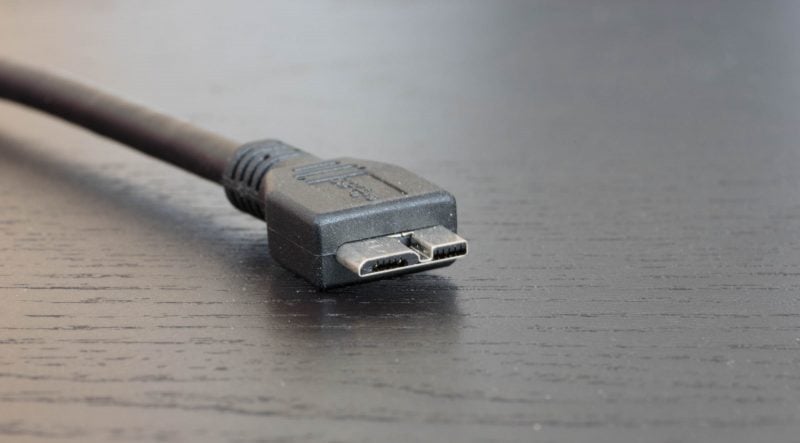
When USB 3.0 was released, some of the first devices utilized the USB 3.0 Micro-B connector, but with the USB Type-C connector rolling out, the USB 3.0 Micro-B connector never really gained much popularity.
Non-Standard USB
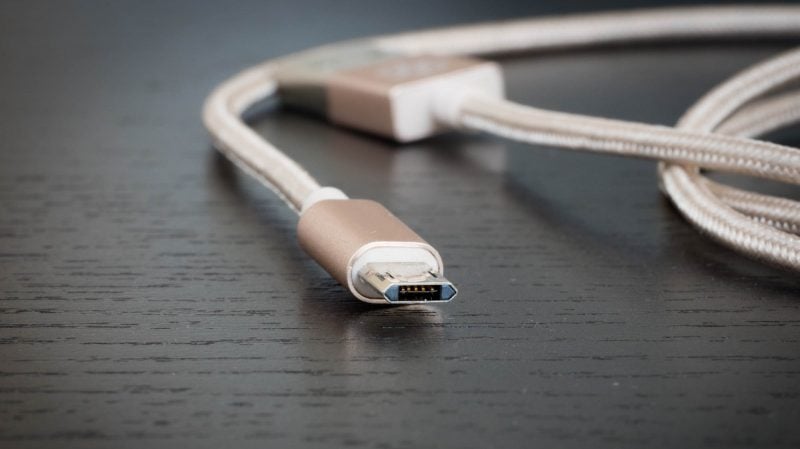
Although rare, you may also run into some non-standard USB connector types such as this one which is a reversible USB Micro-B connector from a USB cable manufactured by SilverStone Technology.
Conclusion
Overall, this is a quick look at some of the most prevalent USB versions and USB connector types on the market. Of course, there are many less popular USB revisions and connector types out there as well as newer ones currently being worked on.
What connector type do you use most often? Have you adopted USB Type-C yet? Let us know in the comments below!

Thanks for the great article! Crystal clear, and exactly what I wanted to know.